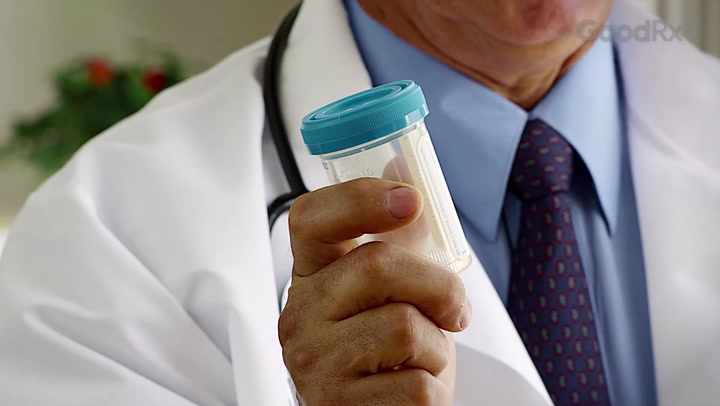
What Is an Electrocardiogram (ECG/EKG)? Test, Results, and Uses
Key takeaways:
An electrocardiogram (ECG or, more commonly, EKG) checks the electrical patterns of the heart and has many uses in medicine.
EKGs are safe, painless, and need no preparation.
Although an electrocardiogram can give important information about the heart, it is not a perfect test. False-normal and false-abnormal results are common.

An electrocardiogram (also known as ECG or EKG) is a common test that is often performed as part of a routine checkup in your primary care provider’s office. The squiggles and lines of the test results are measurements of the heart’s electrical activity.
But while an EKG can be very helpful and, in some cases, lifesaving, it is only one piece of the puzzle in evaluating heart health.
Here, we’ll explain what an electrocardiogram shows and when having one may be useful.
Search and compare options
What is an electrocardiogram?
Although much of today’s medical technology is only a few decades old, the first EKG was invented in 1903 by Dr. Willem Einthoven, who was awarded a Nobel Prize for his work. EKG is the abbreviation of the German translation elektrokardiographie. This is the usual way of referring to the test, although some people use the English abbreviation of “ECG.”
Basically, an EKG is a snapshot of the heart’s electrical patterns. A 12-lead EKG, as it’s called, is done using 10 different electrodes that are attached in specific positions to the chest, arms, and legs. The EKG records the electrical activity of the heart from 12 different angles, using two or more of the electrodes for each section of the test. It usually measures the heart’s patterns for a total of 10 seconds.
Trust your gut. Hear first-hand stories of women who wish they had listened to their instincts when a heart attack hit.
Don’t stress. Your doctor may recommend a heart stress test if you’re having chest pain or shortness of breath. Learn how to prepare and what to expect during the procedure.
Test your heart health. These blood tests check for immediate heart problems and provide information about your risk of developing heart disease.
What does an EKG show?
There are specific features of the heart’s activity that an electrocardiogram reads. These include:
Heart rate
Heart rhythm
Time that it takes the electrical impulse to travel from the upper to lower chambers of the heart
Electrical patterns that might indicate serious conditions (more below)
What are EKGs used for?
EKGs are commonly found in the offices of primary care providers and cardiologists. They are also standard equipment in hospitals, emergency rooms, and surgery centers.
Some of the many reasons that your provider may order an EKG include:
Checking your heart rhythm and heart rate
Looking for causes of heart palpitations, including serious rhythm problems like atrial fibrillation
Evaluating the cause of chest pain
Looking for evidence of heart attack, new or old
Assessing for signs of heart muscle enlargement
Looking for signs of inflammation in your heart muscle or surrounding tissues
Looking for electrical patterns that might indicate inherited forms of heart disease
Monitoring effects of medications that can affect your heart
Checking for dangerous effects of low or high levels of potassium, calcium, and other electrolytes
Screening before surgery, a new exercise program, or anything else that might be stressful for the heart
Testing as part of the requirements for a pilot’s license
Who should have a screening EKG?
Screening EKGs are done as part of a routine physical exam or other medical visit. Although EKGs are usually easy to do, they are not appropriate for everyone. That’s because EKG results can sometimes look abnormal even in people with no known heart disease and no symptoms.
Read more like this
Explore these related articles, suggested for readers like you.
Besides the cost of the test (about $50), an abnormal EKG will often lead to more expensive, and potentially risky, testing. The U.S. Preventive Services Task Force advises against EKG screening in adults without symptoms or risk factors for heart disease.
Of course, if you have heart-related symptoms or issues, an EKG may be necessary. In that case, it is not considered a screening test but instead an important part of your medical workup.
You may need a screening EKG if you are at higher risk for developing heart disease. High-risk conditions include:
Age over 60
Family history of heart disease
Smoking
How is an EKG done?
The EKG electrodes are small, sticky plastic patches that attach to the skin. These patches are connected to wires that go into the EKG machine. Several of the electrodes, or leads, will be placed directly under the left breast. That’s because the heart is on the left side of the chest. Other patches are put in the middle of the chest and on the arms and legs.
The test requires proper placement of the EKG electrodes and good contact with the skin to be accurate. Including the time it takes to place the electrodes correctly, the test will usually take less than 10 minutes.
Things to expect during your EKG:
You may be asked to remove all clothing from the waist up and wear a medical gown.
You will lie on your back.
Good contact between the leads and the skin may require removal of a small patch of chest hair or any lotions or creams on the skin.
You will be asked to hold still and to breathe shallowly, so that the reading is clear.
The electrodes will usually be removed right after the EKG is recorded. Some people are sensitive to the adhesive, but severe skin irritation is rare. If you have an allergy to adhesive, be sure to let your provider know.
How do I get my EKG results?
Most EKG results are printed out or saved to your electronic medical record. EKG machines often include a computer interpretation in the results. These reports are not always accurate, so your medical provider will review the results. If there is a questionable or worrisome result, a cardiologist may review your test before you get the final report.
What happens if my EKG is abnormal?
It might feel scary to have an abnormal result, but your provider will talk you through it. They will take into account other related information, including your symptoms and medical history, before deciding on next steps.
Depending on the test results and these other issues, your provider may suggest further investigation. Possibilities include:
Consultation with a cardiologist
Blood work
Hospitalization
In some cases, EKGs may appear completely normal even when there is serious heart disease. Your medical provider will usually look at the “big picture” when discussing next steps. It’s rare to make a treatment decision based solely on the EKG pattern.
The bottom line
EKGs are safe, quick, and painless when performed by trained medical personnel. The results may help your provider evaluate symptoms or uncover serious heart conditions. In some cases, an abnormal EKG may lead to more testing, which is why it’s not routinely recommended for everyone. Remember that the EKG is only part of the big picture. A normal test does not necessarily rule out a heart problem, and an abnormal test is not always a sign of trouble.
Why trust our experts?


References
Choosing Wisely. (2016). EKGs and exercise stress tests.
De Bie, J., et al. (2020). Performance of seven ECG interpretation programs in identifying arrhythmia and acute cardiovascular syndrome. Journal of Electrocardiography.
National High Magnetic Field Laboratory. (n.d.). William Einthoven.
U.S. Preventive Services Task Force. (2018). Screening for cardiovascular disease risk with electrocardiography: U.S. Preventive Services Task Force recommendation statement. Journal of the American Medical Association.




























